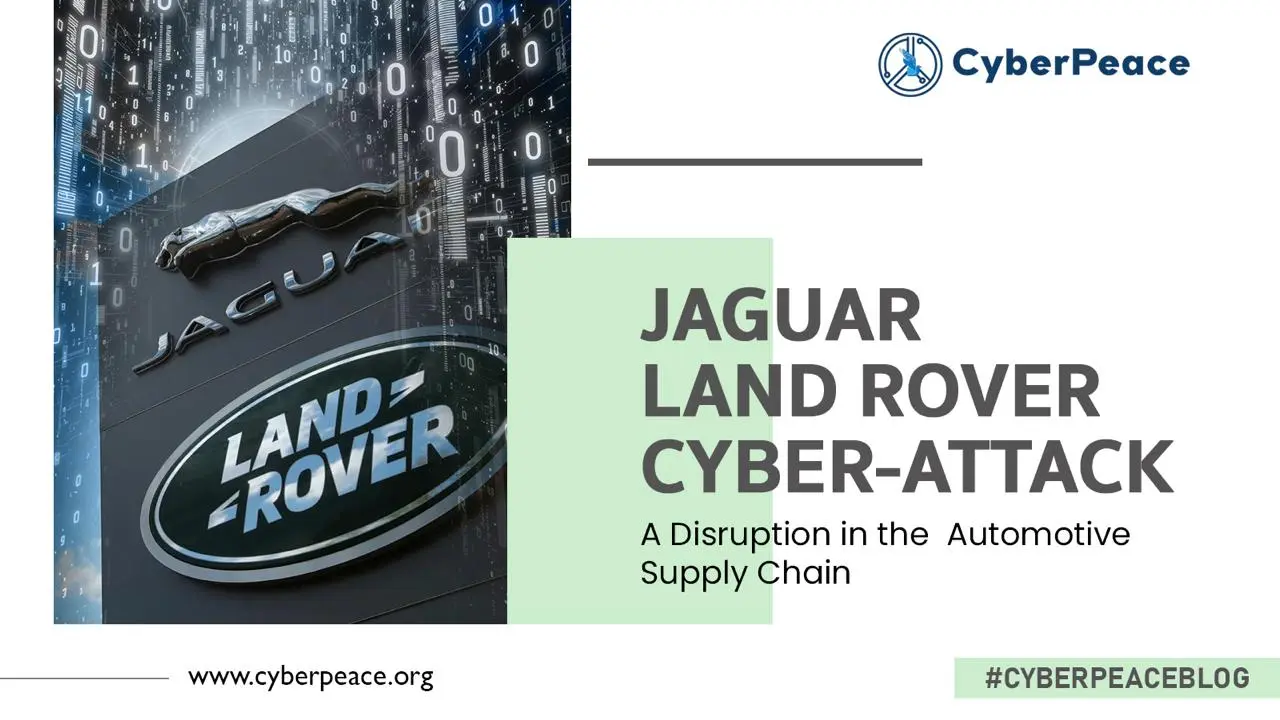#FactCheck - Viral Video of Argentina Football Team Dancing to Bhojpuri Song is Misleading
Executive Summary:
A viral video of the Argentina football team dancing in the dressing room to a Bhojpuri song is being circulated in social media. After analyzing the originality, CyberPeace Research Team discovered that this video was altered and the music was edited. The original footage was posted by former Argentine footballer Sergio Leonel Aguero in his official Instagram page on 19th December 2022. Lionel Messi and his teammates were shown celebrating their win at the 2022 FIFA World Cup. Contrary to viral video, the song in this real-life video is not from Bhojpuri language. The viral video is cropped from a part of Aguero’s upload and the audio of the clip has been changed to incorporate the Bhojpuri song. Therefore, it is concluded that the Argentinian team dancing to Bhojpuri song is misleading.

Claims:
A video of the Argentina football team dancing to a Bhojpuri song after victory.


Fact Check:
On receiving these posts, we split the video into frames, performed the reverse image search on one of these frames and found a video uploaded to the SKY SPORTS website on 19 December 2022.

We found that this is the same clip as in the viral video but the celebration differs. Upon further analysis, We also found a live video uploaded by Argentinian footballer Sergio Leonel Aguero on his Instagram account on 19th December 2022. The viral video was a clip from his live video and the song or music that’s playing is not a Bhojpuri song.

Thus this proves that the news that circulates in the social media in regards to the viral video of Argentina football team dancing Bhojpuri is false and misleading. People should always ensure to check its authenticity before sharing.
Conclusion:
In conclusion, the video that appears to show Argentina’s football team dancing to a Bhojpuri song is fake. It is a manipulated version of an original clip celebrating their 2022 FIFA World Cup victory, with the song altered to include a Bhojpuri song. This confirms that the claim circulating on social media is false and misleading.
- Claim: A viral video of the Argentina football team dancing to a Bhojpuri song after victory.
- Claimed on: Instagram, YouTube
- Fact Check: Fake & Misleading
Related Blogs

Introduction
The recent cyber-attack on Jaguar Land Rover (JLR), one of the world's best-known car makers, has revealed extensive weaknesses in the interlinked character of international supply chains. The incident highlights the increasing cybersecurity issues of industries going through digital transformation. With its production stopped in several UK factories, supply chain disruptions, and service delays to its customers worldwide, this cyber-attack shows how cyber events can ripple into operation, finance, and reputation risks for large businesses.
The Anatomy of a Breakdown
Jaguar Land Rover, a Tata Motors subsidiary, was forced to disable its IT infrastructure because of a cyber-attack over the weekend. This shut down was already an emergency shut down to mitigate damage and the disruption to business was serious.
- No Production - The car plants at Halewood (Merseyside) and Solihull (West Midlands) and the engine plant (Wolverhampton) were all completely shut down.
- Sales and Distribution: Car sales were significantly impaired during a high-volume registration period in September, although certain transactions still passed through manual procedures.
- Global Effect: The breakdown did not reach only the UK, dealers and fix experts across the world, including in Australia, suffered with inaccessible parts databases.
JLR called the recovery process "extremely complex" as it involved a controlled recovery of systems and implementing alternative workarounds for offline services. The overall effects include the immediate and massive impact to their suppliers and customers, and has raised larger questions regarding the sustainability of digital ecosystems in the automobile value chain.
The Human Impact: Beyond JLR's Factories
The implications of the cyber-attack have extended beyond the production lines of JLR:
- Independent Garages: Repair centres such as Nyewood Express of West Sussex indicated that they could not use vital parts databases, which brought repair activities to a standstill and left clients waiting indefinitely.
- Global Dealers: Land Rover experts as distant as Tasmania indicated total system crashes, highlighting global dependency on centralized IT systems.
- Customer Frustration: Regular customers in need of urgent repairs were stranded by the inability to order replacement parts from original manufacturers.
This attack is an example of the cascading effect of cyber disruptions among interconnected industries, a single point of failure paralyzing complete ecosystems.
The Culprit: The Hacker Collective
The hack is justifiably claimed by a so-called hacker collective "Scattered Lapsus$ Hunters." The so-called hacking collective says that it consists of young English-speaking hackers and has previously targeted blue-chip brands like Marks & Spencer. While the attackers seem not to have publicly declared whether they exfiltrated sensitive information or deployed ransomware, they went ahead and posted screenshots of internal JLR documents-the kind of documents that probably are not supposed to see the light of day, including troubleshooting guides and system logs-implicating what can only be described as grossly unauthorized access into some of Jaguar Land Rover's core IT systems.
Jaguar Land Rover had gone on record to claim with no apropos proof or evidence that it probably did not see anyone getting into customer data; however, the very occurrence of this attack raises some very serious questions on insider threats, social engineering concepts, and how efficient cybersecurity governance architectures really are.
Cybersecurity Weaknesses and Lessons Learned
The JLR attack depicts some of the common weaknesses associated with large-scale manufacturing organizations:
- Centralized IT Dependencies: Today's auto firms are based on worldwide IT systems for operations, logistics, and customer care. Compromise can lead to broad outages.
- Supply Chain Vulnerabilities: Tier-2 and Tier-1 suppliers use OEM systems for placing and tracing components. Interrupting at the OEM level automatically stops their processes.
- Inadequate Incident Visibility: Several suppliers complained about no clear information from JLR, which increased uncertainty and financial loss.
- Rise of Youth Hacking Groups: Involvement of youth hacker groups highlight the necessity for active monitoring and community-level cybersecurity awareness initiatives.
Broader Industry Context
With ever-increasing cyber-attacks on the automotive industry, an area currently being rapidly digitalised through connected cars, IoT-based factories, and cloud-based operations, this series of incidents falls within such a context. In 2023, JLR awarded an £800 million contract to Tata Consultancy Services (TCS) for services in support of the company's digital transformation and cybersecurity enhancement. This attack shows that, no matter how much is spent, poorly conceptualised security programs can never stand up to ever-changing cyber threats.
What Can Organizations Do? – Cyberpeace Recommendations
To contain risks and develop a resilience against such events, organizations need to implement a multi-layered approach to cybersecurity:
- Adopt Zero Trust Architecture - Presume breach as the new normal. Verify each user, device, and application before access is given, even inside the internal network.
- Enhance Supply Chain Security - Perform targeted assessments on a routine basis to identify risk factors in diminishing suppliers. Include rigorous cybersecurity provisions in the agreements with suppliers, namely disclosure of vulnerabilities and the agreed period for incident response.
- Durable Backups and Their Restoration - Backward hampers are kept isolated and encrypted to continue operations in case of ransomware incidents or any other occur in system compromise.
- Periodic Red Team Exercises - Simulate cyber-attacks on IT and OT systems to examine if vulnerabilities exist and evaluate current incident response measures.
- Employee Training and Insider Threat Monitoring - Social engineering being the forefront of attack vectors, continuous training and behavioural monitoring will have to be done to avoid credential disposal.
- Public-Private Partnership - Interact with several government agencies and cybersecurity groups for sharing threat intelligence and enforcing best practices complementary to ISO/IEC 27001 and NIST Cybersecurity Framework.
Conclusion
The hacking at Jaguar Land Rover is perhaps one of a thousand reminders that cybersecurity can no longer be seen as a back-office job but rather as an issue of business continuity at the very core of the organization. In the process of digital transformation, the attack surface grows, making the entities targeted by cybercriminals. Operation security demands that cybersecurity be ensured on a proactive basis through resilient supply chains and stakeholders working together. The JLR attack is not an isolated event; it is a warning for the entire automobile sector to maintain security at every level of digitalization.
References
- https://www.bbc.com/news/articles/c1jzl1lw4y1o
- https://www.theguardian.com/business/2025/sep/07/disruption-to-jaguar-land-rover-after-cyber-attack-may-last-until-october
- https://uk.finance.yahoo.com/news/jaguar-factory-workers-told-stay-073458122.html

Introduction
The Data Security Council of India’s India Cyber Threat Report 2025 calculates that a staggering 702 potential attacks happened per minute on average in the country in 2024. Recent alleged data breaches on organisations such as Star Health, WazirX, Indian Council of Medical Research (ICMR), BSNL, etc. highlight the vulnerabilities of government organisations, critical industries, businesses, and individuals in managing their digital assets. India is the second most targeted country for cyber attacks globally, which warrants the development and adoption of cybersecurity governance frameworks essential for the structured management of cyber environments. The following global models offer valuable insights and lessons that can help strengthen cybersecurity governance.
Overview of Global Cybersecurity Governance Models
Cybersecurity governance frameworks provide a structured strategy to mitigate and address cyber threats. Different regions have developed their own governance models for cybersecurity, but they all emphasize risk management, compliance, and cross-sector collaboration for the protection of digital assets. Four such major models are:
- NIST CSF 2.0 (U.S.A): The National Institute of Standards and Technology Cyber Security Framework provides a flexible, voluntary, risk-based approach rather than a one-size-fits-all solution to manage cybersecurity risks. It endorses six core functions, which are: Govern, Identify, Protect, Detect, Respond, and Recover. This is a widely adopted framework used by both public and private sector organizations even outside the U.S.A.
- ISO/IEC 27001: This is a globally recognized standard developed jointly by the International Organization for Standardization (ISO) and the International Electrotechnical Commission (IEC). It provides a risk-based approach to help organizations of all sizes and types to identify, assess, and mitigate potential cybersecurity threats to Information Security Management Systems (ISMS) and preserve the confidentiality, integrity, and availability of information. Organizations can seek ISO 27001 certification to demonstrate compliance with laws and regulations.
- EU NIS2 Directive: The Network and Information Security Directive 2 (NIS2) is an updated EU cybersecurity law that imposes strict obligations on critical services providers in four overarching areas: risk management, corporate accountability, reporting obligations, and business continuity. It is the most comprehensive cybersecurity directive in the EU to date, and non-compliance may attract non-monetary remedies, administrative fines up to at least €10 million or 2% of the global annual revenue (whichever is higher), or even criminal sanctions for top managers.
- GDPR: The General Data Protection Regulation (GDPR)of the EU is a comprehensive data privacy law that also has major cybersecurity implications. It mandates that organizations must integrate cybersecurity into their data protection policies and report breaches within 72 hours, and it prescribes a fine of up to €20 million or 4% of global turnover for non-compliance.
India’s Cybersecurity Governance Landscape
In light of the growing nature of cyber threats, it is notable that the Indian government has taken comprehensive measures along with efforts by relevant agencies such as the Ministry of Electronics and Information Technology, Reserve Bank of India (RBI), National Payments Corporation (NPCI) and Indian Cyber Crime Coordination Centre (I4C), CERT-In. However, there is still a lack of an overarching cybersecurity governance framework or comprehensive law in this area. Multiple regulatory bodies in India oversee cybersecurity for various sectors. Key mechanisms are:
- CERT-In Guidelines: The Indian Computer Emergency Response Team, under the Ministry of Electronics and Information Technology (MeitY), is the nodal agency responsible for cybersecurity incident response, threat intelligence sharing, and capacity building. Organizations are mandated to maintain logs for 180 days and report cyber incidents to CERT-In within six hours of noticing them according to directions under the Information Technology Act, 2000 (IT Act).
- IT Act & DPDP Act: These Acts, along with their associated rules, lay down the legal framework for the protection of ICT systems in India. While some sections mandate that “reasonable” cybersecurity standards be followed, specifics are left to the discretion of the organisations. Enforcement frameworks are vague, which leaves sectoral regulators to fill the gaps.
- Sectoral regulations: The Reserve Bank of India (RBI), the Insurance Regulatory and Development Authority of India (IRDAI), the Department of Telecommunications, the Securities Exchange Board of India (SEBI), National Critical Information Infrastructure Protection Centre (NCIIPC) and other regulatory bodies require that cybersecurity standards be maintained by their regulated entities.
Lessons for India & Way Forward
As the world faces unprecedented security and privacy threats to its digital ecosystem, the need for more comprehensive cybersecurity policies, awareness, and capacity building has perhaps never been greater. While cybersecurity practices may vary with the size, nature, and complexity of an organization (hence “reasonableness” informing measures taken), there is a need for a centralized governance framework in India similar to NIST2 to unify sectoral requirements for simplified compliance and improve enforcement. India ranks 10th on the World Cybercrime Index and was found to be "specialising" in scams and mid-tech crimes- those which affect mid-range businesses and individuals the most. To protect them, India needs to strengthen its enforcement mechanisms across more than just the critical sectors. This can be explored by penalizing bigger organizations handling user data susceptible to breaches more stringently, creating an enabling environment for strong cybersecurity practices through incentives for MSMEs, and investing in cybersecurity workforce training and capacity building. Finally, there is a scope for increased public-private collaboration for real-time cyber intelligence sharing. Thus, a unified, risk-based national cybersecurity governance framework encompassing the current multi-pronged cybersecurity landscape would give direction to siloed efforts. It would help standardize best practices, streamline compliance, and strengthen overall cybersecurity resilience across all sectors in India.
References
- https://cdn.prod.website-files.com/635e632477408d12d1811a64/676e56ee4cc30a320aecf231_Cloudsek%20Annual%20Threat%20Landscape%20Report%202024%20(1).pdf
- https://strobes.co/blog/top-data-breaches-in-2024-month-wise/#:~:text=In%20a%20large%2Dscale%20data,emails%2C%20and%20even%20identity%20theft.
- https://www.google.com/search?q=nist+2.0&oq=nist+&gs_lcrp=EgZjaHJvbWUqBggBEEUYOzIHCAAQABiPAjIGCAEQRRg7MgYIAhBFGDsyCggDEAAYsQMYgAQyBwgEEAAYgAQyBwgFEAAYgAQyBwgGEAAYgAQyBggHEEUYPNIBCDE2MTJqMGo3qAIAsAIA&sourceid=chrome&ie=UTF-8
- https://www.iso.org/standard/27001
- https://nis2directive.eu/nis2-requirements/
- https://economictimes.indiatimes.com/tech/technology/india-ranks-number-10-in-cybercrime-study-finds/articleshow/109223208.cms?from=mdr

Executive Summary:
A viral thumbnail and numerous social posts state that the government of India is giving unemployed youth ₹4,500 a month under a program labeled "PM Berojgari Bhatta Yojana." This claim has been shared on multiple online platforms.. It has given many job-seeking individuals hope, however, when we independently researched the claim, there was no verified source of the scheme or government notification.

Claim:
The viral post states: "The Central Government is conducting a scheme called PM Berojgari Bhatta Yojana in which any unemployed youth would be given ₹ 4,500 each month. Eligible candidates can apply online and get benefits." Several videos and posts show suspicious and unverified website links for registration, trying to get the general public to share their personal information.

Fact check:
In the course of our verification, we conducted a research of all government portals that are official, in this case, the Ministry of Labour and Employment, PMO India, MyScheme, MyGov, and Integrated Government Online Directory, which lists all legitimate Schemes, Programmes, Missions, and Applications run by the Government of India does not posted any scheme related to the PM Berojgari Bhatta Yojana.

Numerous YouTube channels seem to be monetizing false narratives at the expense of sentiment, leading users to misleading websites. The purpose of these scams is typically to either harvest data or market pay-per-click ads that suspend disbelief in outrageous claims.
Our research findings were backed up later by the PIB Fact Check which shared a clarification on social media. stated that: “No such scheme called ‘PM Berojgari Bhatta Yojana’ is in existence. The claim that has gone viral is fake”.

To provide some perspective, in 2021-22, the Rajasthan government launched a state-level program under the Mukhyamantri Udyog Sambal Yojana (MUSY) that provided ₹4,500/month to unemployed women and transgender persons, and ₹4000/month to unemployed males. This was not a Central Government program, and the current viral claim falsely contextualizes past, local initiatives as nationwide policy.

Conclusion:
The claim of a ₹4,500 monthly unemployment benefit under the PM Berojgari Bhatta Yojana is incorrect. The Central Government or any government department has not launched such a scheme. Our claim aligns with PIB Fact Check, which classifies this as a case of misinformation. We encourage everyone to be vigilant and avoid reacting to viral fake news. Verify claims through official sources before sharing or taking action. Let's work together to curb misinformation and protect citizens from false hopes and data fraud.
- Claim: A central policy offers jobless individuals ₹4,500 monthly financial relief
- Claimed On: Social Media
- Fact Check: False and Misleading


